Description
The Sri Lankan Cultural Triangle is a region located in the northern central part of Sri Lanka that encompasses the ancient cities of Anuradhapura, Polonnaruwa, and Kandy. This area is recognized as a UNESCO World Heritage Site and is considered one of the most significant cultural landmarks in Sri Lanka.
The Cultural Triangle is home to a plethora of historical and archaeological sites that reflect the rich cultural heritage of Sri Lanka. The area contains well-preserved ruins of ancient cities, royal palaces, temples, stupas, and monasteries, showcasing the architectural and engineering expertise of the ancient Sri Lankan civilization.
The ancient city of Anuradhapura was once the capital of Sri Lanka and is home to some of the most significant and well-preserved ancient ruins in the country, including the sacred Bodhi tree, which is said to have been grown from a cutting of the tree under which Buddha attained enlightenment.
Polonnaruwa is another ancient city that served as the capital of Sri Lanka from the 11th to the 13th century and is home to many impressive ruins, including the royal palace, stupas, temples, and statues of the Buddha.
Kandy, the last capital of the Sri Lankan kings, is a significant religious center and is home to the Temple of the Tooth, which houses the relic of the tooth of Buddha and is one of the most sacred sites for Buddhists.
Visitors to the Sri Lankan Cultural Triangle can explore the rich cultural heritage of Sri Lanka and learn about the ancient civilization that once flourished in the region. The area also offers stunning natural scenery, including lush forests, picturesque lakes, and rolling hills, making it a popular destination for both cultural and nature enthusiasts.
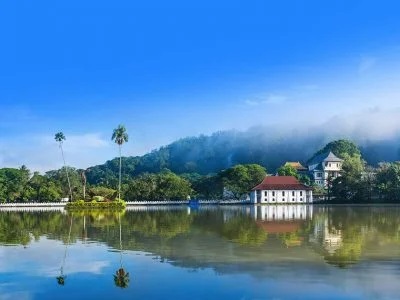
Kandy
Kandy is a picturesque city located in the central province of Sri Lanka. It is considered one of the country's most important cultural and spiritual hubs, and is known for its historical significance and stunning natural beauty. The city is home to the famous Temple of the Tooth, which is believed to house a relic of the Buddha's tooth. This temple is considered one of the most sacred Buddhist sites in the world and is a major pilgrimage destination for Buddhists from all over the globe. Other attractions in Kandy include the beautiful Peradeniya Botanical Gardens, the Kandy Lake, and the Udawattakele Forest Reserve, which offers breathtaking views of the surrounding hills and valleys. Visitors to Kandy can also experience traditional Kandyan dance performances, visit local tea plantations, and explore the city's vibrant markets. Kandy is a must-visit destination for anyone interested in Sri Lanka's rich history, culture, and natural beauty.

Dambulla
Dambulla is a town located in the central province of Sri Lanka. It is famous for its ancient cave temples, which are a UNESCO World Heritage Site. The Dambulla cave temple complex consists of five caves, each filled with beautifully preserved ancient statues and paintings depicting Buddhist history and mythology. The largest and most impressive cave is the Mahā Rāja Vihāra cave, which is over 50 meters in length and contains over 150 statues of the Buddha. Visitors to Dambulla can also explore the city's vibrant markets, sample delicious Sri Lankan cuisine, and take in the stunning views of the surrounding hills and countryside. Dambulla is a must-visit destination for anyone interested in Sri Lanka's rich history and culture, and is a perfect place to experience the country's ancient Buddhist heritage.

Sigiriya
Sigiriya is an ancient rock fortress located in the central province of Sri Lanka. It was built in the 5th century AD by King Kasyapa and is considered one of the most impressive examples of ancient urban planning and engineering in the world. The fortress is built on top of a massive 200-meter-high rock, and features a series of impressive water gardens, rock paintings, and architectural wonders, including the famous lion's paw entrance and the mirror wall. Visitors can climb to the top of the fortress to enjoy breathtaking views of the surrounding landscape, including the nearby Pidurangala Rock. Sigiriya is a UNESCO World Heritage Site and a must-visit destination for anyone interested in Sri Lanka's rich cultural and architectural history.

Polonnaruwa
Polonnaruwa is an ancient city located in the North Central Province of Sri Lanka. It was the capital of Sri Lanka from the 11th to the 13th century AD, and is home to a large number of well-preserved ruins and archaeological sites. Some of the most impressive attractions in Polonnaruwa include the Royal Palace complex, the Quadrangle, the Rankot Vihara stupa, and the Gal Vihara rock temple, which features four stunning Buddha statues carved from a single granite block. Visitors can explore the ancient ruins on foot, by bicycle, or by hiring a tuk-tuk driver, and can enjoy stunning views of the surrounding countryside along the way. Polonnaruwa is a UNESCO World Heritage Site and a must-visit destination for anyone interested in Sri Lanka's rich cultural and architectural history.
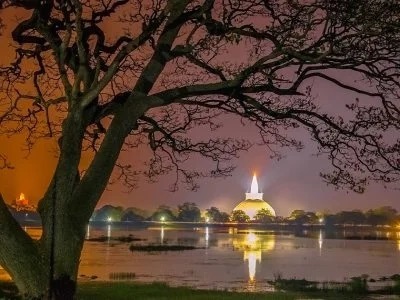
Anuradhapura
Anuradhapura is an ancient city located in the North Central Province of Sri Lanka. It was the capital of Sri Lanka from the 4th century BC to the 11th century AD and is considered one of the oldest continuously inhabited cities in the world. The city is home to a large number of well-preserved archaeological sites, including several large dagobas (stupas), ancient temples, and monasteries. Some of the most famous attractions in Anuradhapura include the Sri Maha Bodhi tree, which is believed to have been grown from a cutting of the Bodhi tree under which the Buddha attained enlightenment, and the massive Ruwanwelisaya dagoba. Visitors can explore the ancient ruins on foot or by hiring a bicycle, and can learn about the city's rich cultural and architectural history at the onsite museum. Anuradhapura is a UNESCO World Heritage Site and a must-visit destination for anyone interested in Sri Lanka's ancient history and Buddhist heritage.
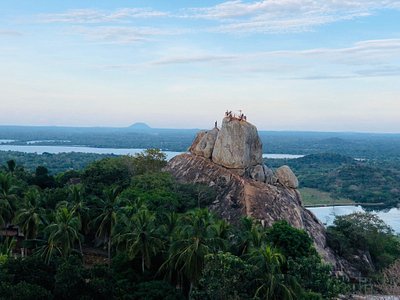
Mihinthale
Mihintale is a sacred mountain peak located near Anuradhapura in the North Central Province of Sri Lanka. It is considered to be the site where Buddhism was introduced to Sri Lanka by Mahinda, the son of the Indian Emperor Ashoka, in the 3rd century BC. The mountain is home to a large number of ancient Buddhist shrines, temples, and monasteries, including the Mihintale Stupa, which is believed to have been built over the spot where Mahinda first met King Devanampiyatissa and introduced him to Buddhism. Visitors can climb the steps to the summit of the mountain and enjoy panoramic views of the surrounding countryside, or explore the numerous ancient ruins and archaeological sites scattered throughout the area. Mihintale is an important pilgrimage site for Sri Lankan Buddhists and a popular tourist destination for anyone interested in the country's rich cultural and religious heritage.
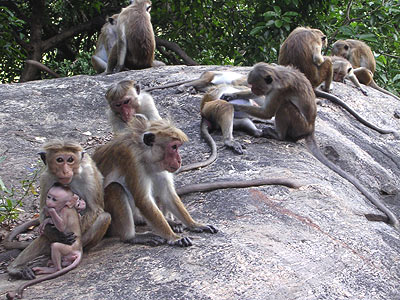
Ritigala
Ritigala is an ancient Buddhist monastery and forest complex located in the North Central Province of Sri Lanka, near the town of Habarana. The site is believed to have been occupied by Buddhist monks as early as the 1st century BC and served as an important religious and cultural center for centuries. The monastery is located on a hill surrounded by dense forest, and is known for its well-preserved ruins and ancient inscriptions. Visitors can explore the many ruins, including the remains of a stupa, a stone bridge, and several stone buildings, and enjoy scenic walks through the surrounding forest. The site is also known for its diverse flora and fauna, including several species of rare and endemic plants and animals. Ritigala is an important historical and cultural site in Sri Lanka and a popular destination for tourists and pilgrims alike.
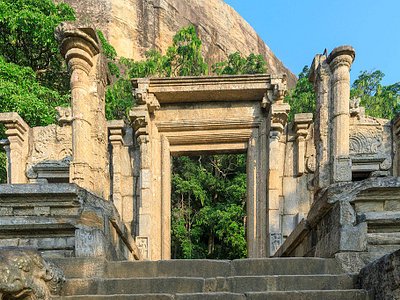
Yapahuwa
Yapahuwa is an ancient fortress and Buddhist temple located in the North Western Province of Sri Lanka, near the town of Kurunegala. The site served as the capital of Sri Lanka for a brief period in the 13th century, after King Bhuvanekabahu I seized power and moved the capital from Polonnaruwa. Yapahuwa is known for its impressive rock fortress, which features a series of steep staircases leading to the top, where visitors can see the remains of the palace and other buildings. The site is also home to a large number of ancient sculptures and inscriptions, including a famous stone staircase known as the "Stairway to Heaven." In addition to the fortress, Yapahuwa is home to a Buddhist temple that was built during the reign of King Parakramabahu II in the 12th century. The temple is known for its impressive rock carvings and ancient frescoes. Yapahuwa is an important historical and cultural site in Sri Lanka and a popular destination for tourists and history buffs.